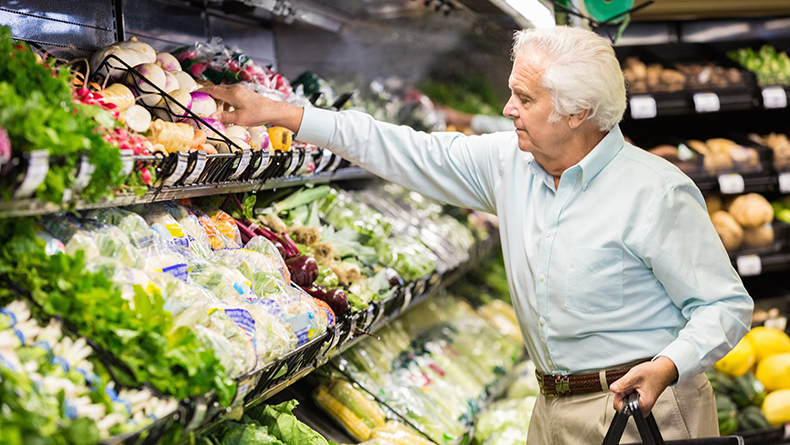AARP Eye Center
Protecting SNAP: An Essential Safety Net for Millions of Older Americans
By Olivia Dean, Lynda Flowers, March 25, 2019 03:40 PM

The Supplemental Nutrition Assistance Program (SNAP)—formerly known as food stamps—is a federal and state-administered program that prevents millions of low-income Americans from going hungry by giving them resources to buy food.
8.8 million SNAP households with adults ages 50 or older rely on SNAP to meet their basic nutritional needs. [1] In 2017, 43 percent of SNAP households included at least one adult aged 50 or older. That share varied from 30 percent in California to 57 percent in New York (see table below blog). While the total number of SNAP households fell from 2016 to 2017, the share with older adults increased slightly, and the need is likely to continue to grow as the population ages.
SNAP works: it reduces hunger and is associated with improved health. The program has also been linked to reduced hospital and nursing home admissions among older adults. However, the majority of SNAP-eligible older adults are not receiving the benefit. Potential reasons for this disconnect include stigma associated with receiving government benefits, confusion about eligibility requirements, and burdensome application processes.
Recent federal proposals would add additional barriers to an already underused program, including efforts to require older adults to prove they’re engaging in work activities for a certain number of hours per week or risk losing SNAP after three months. While the 2018 Farm Bill preserved SNAP benefits and did not include such work requirements for Americans ages 50 to 59, we’re not out of the woods yet.
Instead of creating more barriers to receipt of SNAP, policymakers should work to improve access to the program. How? By streamlining application processes, educating potential applicants about the program and eligibility requirements, and undertaking activities to reduce stigma. Education and awareness efforts should directly address a common myth that receiving SNAP benefits is tantamount to taking food out of someone else’s mouth.
Good nutrition is essential to healthy aging. Ensuring that SNAP remains an important resource for vulnerable older adults should be a national priority.
SNAP Households with Older Adults Ages 50+, 2017


Source: AARP Public Policy Institute analysis of Supplemental Nutrition Assistance Program Quality Control Data, 2017 Public Use File. Note: The authors thank Carlos Figueiredo for his help with data analysis for this blog.
[1] A SNAP “household” is either a person living alone or group of people living together who customarily purchase and prepare food together. Data reported include households with one or more eligible older adults.
March is National Nutrition Month and National Public Health Week starts April 1st! Check out more of AARP Public Policy Institute's public health work here.

Olivia Dean is a policy research senior analyst in AARP’s Public Policy Institute. Her areas of expertise include public health, health disparities, private coverage, and emerging health trends.

Lynda Flowers is a senior strategic policy advisor in AARP's Public Policy Institute. Her areas of expertise include Medicaid, health disparities/health equity, public health, and healthy living.























































